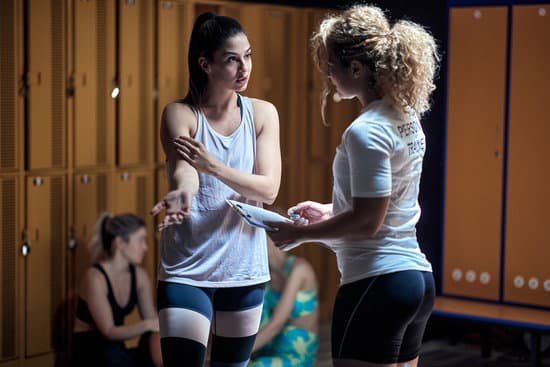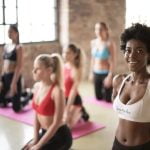Are you wondering how to fit exercise into a school day? As students navigate through their academic responsibilities, finding time for physical activity may seem challenging. However, incorporating exercise into the school day is essential for maintaining overall health and well-being. In this article, we will explore the importance of regular physical activity for students and provide practical tips for fitting in exercise before, during, and after school.
Regular physical activity offers numerous benefits for students, including improved focus, mood, and overall health. Research has shown that exercise can enhance cognitive function, leading to better academic performance. Additionally, engaging in physical activity can help reduce stress and anxiety, contributing to a positive mindset and emotional well-being. With these benefits in mind, it’s crucial for students to find ways to prioritize exercise within their daily routine.
In the following sections, we will discuss various strategies for incorporating movement into the school day. From time management and active learning ideas to utilizing physical education classes and sports teams, there are numerous opportunities for students to stay active throughout the day.
By implementing these strategies, students can create a supportive environment that promotes a healthy balance between academics and physical fitness. Let’s explore how making exercise a priority can have a positive impact on students’ overall well-being.
The Benefits of Regular Physical Activity for Students
Regular physical activity is not only beneficial for adults, but it also plays a crucial role in the overall well-being and development of students. For young individuals, incorporating exercise into their daily routine can have a positive impact on various aspects of their lives, including their focus, mood, and overall health.
- Improved Focus: Engaging in regular physical activity has been proven to enhance cognitive function and concentration. By getting their bodies moving, students can boost blood flow to the brain, which can help improve their ability to focus and retain information during classes.
- Enhanced Mood: Exercise has a direct correlation with mental health. Physical activity releases endorphins, also known as “feel-good” hormones, that can help alleviate stress and boost mood. By engaging in regular exercise, students may experience reduced feelings of anxiety or depression, leading to an overall improved sense of well-being.
- Better Overall Health: Encouraging students to participate in regular physical activity sets the foundation for healthy habits that can last a lifetime. It helps them maintain a healthy weight, strengthens bones and muscles, improves cardiovascular fitness, and reduces the risk of developing chronic conditions such as obesity or diabetes.
Incorporating regular physical activity into a student’s daily routine not only benefits their current well-being but also sets them up for a healthier future. By recognizing the positive effects that exercise can have on focus, mood, and overall health, educators and parents can work together to prioritize physical activity for students both at school and at home.
Tips for Fitting in Exercise Before and After School
Students often find it challenging to fit exercise into their school day, especially with the demands of academic work and extracurricular activities. However, prioritizing physical activity is essential for overall health and well-being. Here are some tips for fitting in exercise before and after school:
1. Time management: One of the key factors in fitting exercise into a school day is effective time management. Students can create a schedule that includes dedicated time for physical activity before or after school. This may involve waking up earlier to go for a run or making time for a workout session in the evening.
2. Prioritizing physical activity: It’s important for students to prioritize exercise as an essential part of their daily routine. By recognizing the benefits of regular physical activity, such as improved focus and mood, students can make it a priority to incorporate exercise into their school day. This may involve making compromises, such as reducing screen time or reallocating time spent on other activities.
3. Setting goals: Another helpful tip is for students to set specific fitness goals that are achievable within their schedule. Whether it’s aiming for a certain number of steps per day or increasing endurance through regular workouts, setting goals can provide motivation and accountability in fitting exercise into the school day.
By implementing these tips for fitting in exercise before and after school, students can prioritize physical activity as an essential component of their daily routine, leading to improved overall health and well-being.
Incorporating Movement Into the School Day
Active Learning Strategies
One effective way to incorporate movement into the school day is through active learning strategies. These activities require students to move around, work together, and engage in hands-on experiences. For example, teachers can organize scavenger hunts, interactive simulations, or group discussions that involve physical movement. This not only encourages students to be physically active but also enhances their learning experience by making it more dynamic and engaging.
Desk Exercises
Desk exercises are another practical way to encourage physical activity during the school day. Simple stretches, leg lifts, shoulder rotations, and deep breathing exercises can be performed discreetly at the desk without causing a disruption.
Teachers can implement regular breaks during class time for students to stand up and stretch or assign quick exercise routines that can be done right at their desks. By incorporating these movements into the daily routine, students can combat the negative effects of prolonged sitting while staying focused on their academic responsibilities.
Utilizing Physical Education Classes and Sports Teams for Regular Exercise
Physical education classes and sports teams provide excellent opportunities for students to engage in regular exercise. These structured activities not only promote physical fitness but also encourage teamwork, discipline, and leadership skills. By participating in physical education classes and joining sports teams, students can maintain a consistent exercise routine while also enjoying the social aspect of physical activity.
Benefits of Physical Education Classes
Physical education classes are designed to improve overall fitness levels, enhance motor skills, and introduce new forms of physical activity to students. Additionally, these classes often incorporate elements of teamwork, communication, and sportsmanship, which are valuable life skills that go beyond just physical wellness. Regular participation in physical education classes can contribute to better coordination, agility, and cardiovascular health for students.
Engaging in Sports Teams
Joining a sports team is another effective way for students to stay physically active on a regular basis. Whether it’s basketball, soccer, track and field, or swimming, being part of a sports team allows students to develop specific skills while getting their necessary dose of exercise during scheduled practices and competitive games or events. Furthermore, involvement in sports can instill discipline, time management, and goal-setting abilities in students – qualities that are beneficial both on and off the field.
Making Use of Break Times and Lunch Periods for Physical Activity
For students, finding time to incorporate physical activity into their daily routine can be challenging, especially with the demands of a busy school day. Fortunately, break times and lunch periods provide valuable opportunities for students to engage in physical activity and add more movement to their day. By making use of these designated times, students can reap the benefits of exercise while still managing their academic responsibilities.
During break times and lunch periods, students have the freedom to engage in various activities that promote physical activity. Whether it’s participating in a game of basketball, going for a walk around the school grounds, or simply stretching and moving around, these moments can contribute to increased energy levels and improved focus when they return to their classes.
It’s important for schools to encourage students to make the most of these intervals by providing access to outdoor spaces, sports equipment, and organized activities that promote movement.
Additionally, educators can play a role in promoting physical activity during break times and lunch periods by organizing fitness challenges or movement-based games for students. By incorporating fun and engaging activities into these periods of the school day, teachers can foster a culture of active living and encourage students to prioritize their physical well-being.
This approach not only contributes to the overall health of students but also enhances their academic performance by promoting better focus and concentration throughout the day. Ultimately, making use of break times and lunch periods for physical activity is an important aspect of integrating exercise into the school day.
Encouraging Extracurricular Activities That Involve Movement and Exercise
Encouraging students to participate in extracurricular activities that involve movement and exercise is an important way to promote physical activity outside of the school day. Engaging in activities such as dance, martial arts, or outdoor sports not only contributes to overall health and fitness but also provides opportunities for students to develop new skills, establish friendships, and build self-confidence. Research has shown that participation in extracurricular activities can have a positive impact on academic performance and overall well-being.
Schools can play a key role in promoting these types of activities by offering a variety of options that cater to different interests and abilities. This may include forming after-school clubs or teams focused on specific sports or physical activities, partnering with local community organizations to provide access to recreational programs, or organizing outdoor events that encourage students and their families to be active together.
By creating a supportive environment that values physical activity beyond the traditional classroom setting, schools can help students develop lifelong habits of staying active and healthy.
In addition, educators and parents can work together to encourage students to explore different extracurricular opportunities and find activities that they enjoy. By highlighting the benefits of regular exercise and advocating for the importance of maintaining an active lifestyle, adults can motivate young people to prioritize movement and physical well-being.
Moreover, providing resources such as information about local programs, arranging transportation for students who may face barriers to participating in extracurricular activities, or offering incentives for involvement can further support students in pursuing these opportunities.
| Extracurricular Activities | Benefits |
|---|---|
| Dance | Improved physical fitness, coordination, and self-expression |
| Martial Arts | Enhanced discipline, focus, and self-defense skills |
| Outdoor Sports | Teamwork skills development, exposure to nature, stress relief |
Creating a Supportive Environment at Home for Students to Continue Exercising Outside of School
In addition, parents can lead by example by engaging in their own regular physical activity. When children see their parents prioritizing exercise and enjoying physical activities, they are more likely to adopt similar habits themselves. It’s important for families to make time for physical activity together, whether it’s going for walks after dinner, playing sports on the weekends, or finding other ways to stay active as a family unit.
Another key aspect of creating a supportive environment at home is ensuring access to safe and appropriate exercise equipment and spaces. This could involve having a designated area for indoor workouts or ensuring that there are opportunities for outdoor play in the neighborhood. By providing the means and encouragement for children to engage in physical activity at home, parents and guardians can help instill a lifelong appreciation for fitness and overall well-being.
| Supportive Environment at Home | Examples |
|---|---|
| Providing opportunities for exercise | Organized sports, family activities such as hiking or biking |
| Leading by example | Engaging in regular physical activity as a family |
| Access to exercise equipment/spaces | Designated area for indoor workouts, safe outdoor play areas |
Resources and Tools for Students to Track Their Physical Activity and Set Fitness Goals
In today’s fast-paced and technology-driven world, it can be challenging for students to find the time and motivation to incorporate regular exercise into their school day. However, the benefits of physical activity for students’ focus, mood, and overall health cannot be overstated. As we have discussed throughout this article, there are various ways for students to fit exercise into their daily routine, both at school and at home.
One important aspect of maintaining a healthy and active lifestyle is being able to track physical activity and set fitness goals. Fortunately, there are numerous resources and tools available to help students do just that.
One valuable resource for students looking to track their physical activity and set fitness goals is wearable technology such as fitness trackers or smartwatches. These devices can provide insight into the number of steps taken, calories burned, and even sleep patterns. Additionally, many of these devices offer goal-setting features and progress tracking that can help students stay motivated and accountable in their fitness journey.
Another useful tool for students is mobile apps designed specifically for tracking physical activity and setting fitness goals. There are a wide variety of apps available that cater to different types of exercise, from running and cycling to yoga and strength training. These apps often provide workout ideas, progress tracking, goal setting, and even community support through social features.
Lastly, schools can also provide resources such as online platforms or software that allow students to log their physical activity and set personal fitness goals. This could be integrated into physical education classes or offered as an optional tool for those seeking extra support in staying active. By leveraging these resources and tools, students can take control of their physical activity habits and strive towards a healthier lifestyle both during school hours and beyond.
As educators, parents, and community members alike continue to emphasize the importance of regular exercise for students’ well-being, it is crucial that we provide them with the necessary support systems to help them succeed in this endeavor.
By offering access to valuable resources such as wearable technology, mobile apps, or school-based platforms for tracking physical activity and setting fitness goals, we can empower our youth to embrace an active lifestyle both now in school settings and long after they graduate.
Frequently Asked Questions
How Can I Exercise While Going to School?
Finding time to exercise while going to school can be challenging, but it is definitely possible. One way to do this is by incorporating physical activity into your daily routine, such as walking or biking to school instead of taking the bus or driving.
Another option is to participate in school sports teams or after-school fitness clubs. You can also make use of any free time between classes or during breaks to do quick exercises like stretching or jogging.
How Do You Fit Before School Workout?
Fitting a workout in before school can be a great way to start the day feeling energized and focused. One strategy is to wake up just a little bit earlier than usual to give yourself enough time for a quick workout.
This could be anything from a short jog around your neighborhood, some simple bodyweight exercises at home, or even a yoga session. It’s all about finding something that you enjoy and that gets your body moving before the school day begins.
How Do I Fit My Workout Into My Day?
To fit your workout into your day while going to school, it’s important to prioritize and plan ahead. Look for gaps in your schedule where you can squeeze in some physical activity, whether it’s during lunchtime, after school, or even in the evening.
Additionally, consider combining activities whenever possible – for example, walk or bike with friends rather than always meeting up for sedentary hangouts. Setting specific goals and making exercise a priority will help you find the time for it in your busy day-to-day life.

Passionate about providing useful information to anyone with an interest in the field of Personal Training, I strive to pass on to our readers quality information and to answer any questions about Personal Trainers, the work they do and how to become one.





